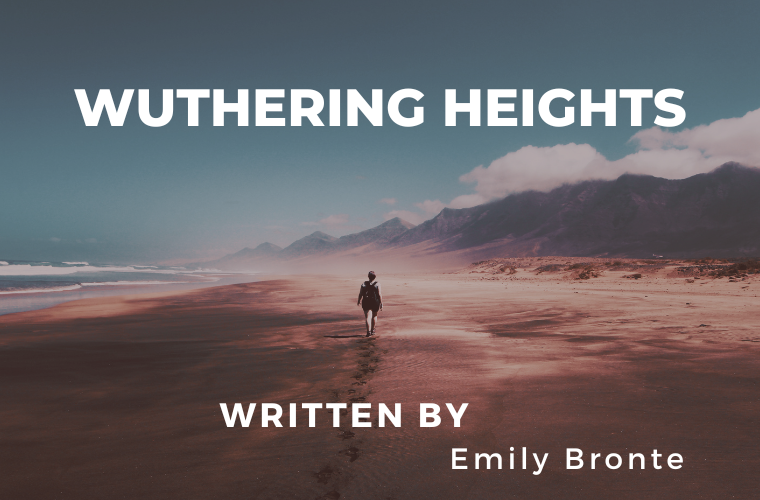About Author
Emily Bronte was born in 1818 in the village of Thornton, in West Yorkshire, England. Wuthering Heights by Emily Bronte She grew up in the nearby village of Haworth, where her father was a curate and she received her education at home.
Emily and her siblings were encouraged to read widely and she developed a love for literature from an early age. In 1847, she published Wuthering Heights under the pseudonym “Ellis Bell”, along with her sisters Charlotte and Anne, who published their own novels that same year.
Although the novel initially received mixed reviews, it has since become a classic of English literature and is widely regarded as one of the greatest novels of all time. Emily Bronte’s life was cut short by illness and she died of tuberculosis in 1848. Just one year after the publication of her novel.
She was only 30 years old at the time of her death, but her legacy as a writer has endured, inspiring generations of readers and writers alike. Her vivid and intense prose, as well as her exploration of complex themes. Such as love, revenge, and the destructive power of passion, continue to captivate readers and cement her place as one of the most important writers of the 19th century.
Pilot Summary
Heathcliff is the dark and brooding antihero of the novel. He is fiercely loyal to those he loves, particularly Catherine Earnshaw, but his obsession with revenge drives him to commit terrible acts of cruelty and violence.
Catherine Earnshaw is a complex and conflicted character. She is passionate and free-spirited, but also selfish and impulsive. Her love for Heathcliff is all-consuming, but her desire for social status and wealth ultimately leads her to marry Edgar Linton.
Edgar Linton is Catherine’s polar opposite. He is refined and genteel, representing the civilized world that Heathcliff despises. Despite his love for Catherine, he is often portrayed as weak and ineffectual.
Hindley Earnshaw, Catherine’s brother, is a cruel and abusive character who resents Heathcliff’s presence at Wuthering Heights. He is consumed by his own anger and jealousy, and his treatment of Heathcliff sets off a cycle of revenge and violence.
Nelly Dean is the narrator of much of the story, providing insight into the lives and motivations of the characters. She is loyal and trustworthy, but also somewhat judgmental and biased.
Isabella Linton is Edgar’s sister and Heathcliff’s wife. She is initially infatuated with Heathcliff, but comes to realize the depth of his cruelty and abuse.
These characters, along with others, are all intricately woven into the complex tapestry of Wuthering Heights. Bronte’s vivid characterization and exploration of their inner lives make the novel a powerful and enduring work of literature.
Themes and Motifs
Certainly, here are some of the major themes and motifs in Wuthering Heights by Emily Bronte:
Love and Passion: One of the most prominent themes in the novel is the all-consuming nature of love and passion. The relationships between Catherine, Heathcliff, and Edgar are intense and often destructive, and their emotions drive much of the plot.
Revenge: Revenge is another major theme in the novel, as Heathcliff’s desire for vengeance against those who wronged him drives much of the action. This desire for revenge becomes an all-consuming obsession that ultimately leads to tragedy and destruction.
Class and Social Status: Class and social status play a significant role in the novel. As the characters’ positions in society shape their relationships and interactions. Catherine’s desire for social status leads her to marry Edgar. While Heathcliff’s lower class status and lack of social connections contribute to his sense of isolation and anger.
Nature: The natural landscape of the moors is a powerful motif in the novel, representing the wildness and intensity of the characters’ emotions. The moors also provide a stark contrast to the civilized world of the Lintons, and highlight the theme of the natural versus the artificial.
Ghosts and Supernatural: The novel also contains elements of the supernatural, with ghosts and apparitions appearing throughout the story. These supernatural elements contribute to the novel’s Gothic atmosphere and add to the sense of foreboding and unease.
Overall, Wuthering Heights is a complex and multi-layered novel that explores a wide range of themes and motifs. Bronte’s vivid characterization, intense emotion, and skillful use of symbolism and imagery make it a powerful and enduring work of literature.
literary Context
Wuthering Heights was published in 1847, during a time of significant social and cultural change in England. The Victorian era, which lasted from the mid-19th century to the early 20th century. It was characterized by a strict moral code and a focus on propriety and respectability.
However, the novel itself stands apart from the conventional social mores of the time, featuring characters who are passionate, complex, and often morally ambiguous. The novel’s exploration of intense emotional states and taboo subject matter was considered scandalous at the time of its publication.
The novel can be classified as a Gothic novel, a genre that was popular in the late 18th and early 19th centuries. Gothic novels typically featured supernatural elements, dark and mysterious settings, and themes of horror and suspense.
Additionally, the novel can be seen as part of the Romantic literary movement. Which emphasized individualism, emotion, and the power of nature. The Romantic period spanned from the late 18th to mid-19th century, and Wuthering Heights’ focus on intense emotion. The natural world reflects many of the key tenets of the movement.
Overall, Wuthering Heights is a significant work of literature that defied the conventions of its time and continues to resonate with readers today. Its exploration of complex human emotions, intense relationships. The forces of nature and the supernatural place it firmly within the broader. Literary context of the Victorian era and the Romantic movement.
conclusion
Wuthering Heights by Emily Bronte is a masterpiece of English literature that has captivated readers for generations.
With its haunting themes of love, revenge, and the destructive power of passion, as well as its vivid and intense prose.
Emily Bronte’s legacy as a writer endures, and her impact on English literature cannot be overstated.
Through her novel, she explores complex ideas about human nature and relationships, and her skillful use of symbolism.
Wuthering Heights remains a timeless work of art. Its enduring popularity is a testament to Emily Bronte’s talent and vision as a writer.





